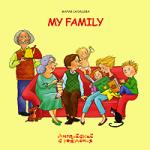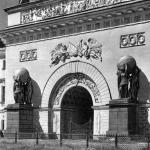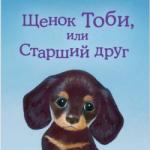The history of mankind knows many examples of heroism and courage. They came to us thanks to chroniclers, oral literature, myths and legends. This is very important for future generations: descendants should be proud of their national heroes, even if the events took place more than a thousand years ago! Not everyone knows about what feat the youth from Kiev accomplished, and at what time it happened.
Studying in literature lessons
Of course, “The Tale of Bygone Years,” recorded by Nestor, required translation and processing in order for this historical work to be understandable to the modern reader. The content of legends and historical events is conveyed to us Old Russian literature. The feat of the youth from Kiev was already outlined on Today, the legend is studied in schools by fifth grade students. Some Old Russian words, the names of tribes and peoples remain incomprehensible to children. To make archaisms easier to remember, you should compile a small dictionary for yourself: during the teacher’s explanation, write down the meaning of expressions or individual names. Children may not know what a youth, father, Pechenegs, or grieving are. Although, in parallel, in history lessons, children study Ancient Rus' and hear some terms.
Quotation plan
The feat of the youth from Kiev is better perceived by children if the teacher recommends that they draw up a plan for the work. It is advisable that this be a quotation plan: it is enough to use phrases from the text that reflect the content of the episode. It might look like this:
The Pechenegs came to Russian land;
They besieged the city with great force;
Who could get over to the other side;
The boy said: “I’ll get through!”;
Will people surrender to the Pechenegs;
They sat down in the boats and blew the trumpet loudly;
An army is following me;
He gave Pretich a horse, a saber and arrows;
Svyatoslav returned to Kyiv.
The monument, built in honor of the victory of Prince Svyatoslav Igorevich over the Pechenegs, still stands above the banks of the Dnieper in Zaporozhye.
Each part of the story is easily remembered and retold, thanks to the use of a quotation plan. The teacher can invite students to read the work role-playing. In such lessons, children begin to understand the significance of the appearance of writing, books, chronicles for the now Christian Rus'. Many schoolchildren today know about the feat the Kiev boy accomplished thanks to literature and history lessons. In honor of this feat, the St. Sophia Cathedral was built.

Books and chronicles
Until the 11th century, books came to Rus' only from Byzantium, and then from Bulgaria. These were translations by foreign authors. The first works of ancient Russian writers appeared only in the eleventh century: this is the work of Hilarion and the chronicle. In other countries this genre was not known. In the 12th century, the monk Nestor made additions and corrections to the old chronicles and gave them the name “The Tale of Bygone Years.” Temporary summers mean past years. The chronicle describes the life and activities of all the Russian princes: the author especially emphasizes the idea that only the love of brothers and the desire for peace could unite them. Love for the Motherland, caring attitude towards the land of one’s ancestors - the fatherland - is the main motive of the entire work. And although the beginning of the book is similar to legends and myths, the reader receives information about historical figures who created the first principalities Ancient Rus'. Part of the story is a description of what feat the Kiev youth and governor Pretich accomplished.
The legend of the youth's feat
This happened in the summer of 968 or, according to the calendar of those times, in 6476. The principalities were constantly subject to attacks from eastern tribes. But this summer, for the first time, the Pechenegs encroached. At this time, Svyatoslav was not in the city of Kyiv: he was in Pereyaslavets. His mother, Princess Olga, stayed here with her grandchildren, the children of Svyatoslav.

These were his three sons: Oleg, Vladimir and Yaropolk. She locked herself in with them in the city of Kyiv, and they were not able to get out of there: the Pechenegs besieged it with great force. There was no way for the population to go outside the city; it was impossible to send messages and ask for help. People were exhausted from hunger and thirst.
Youth from Kiev and feat
On the other side of the Dnieper, people also gathered who could not get to Kyiv through the huge horde of Pechenegs in order to help the residents of the city or deliver provisions and water there. They stood ready in the boats on the opposite bank and could not do anything.
The population of the city tried to find someone who could get through the ranks of the enemies and inform the troops that if they did not approach Kyiv, they would have to surrender to the Pechenegs. And then one young man from Kiev declared that he would make his way to “his own people.” The people told him: “Go!”

This boy knew the Pecheneg language. He took the bridle in his hands and went out with it into the enemy’s camp. He ran through their ranks and asked if anyone had seen his horse? They took the young man for their man. Having reached the Dnieper, he threw off his clothes and threw himself into the water. The Pechenegs saw his maneuver and rushed after him, shooting: but nothing could be done.
Voivode Pretich and his cunning
People on the opposite bank noticed that the Kiev youth threw himself into the water and swam towards them. They went on boats to meet him, lifted him on board and took him to the squad. The youth said that if the soldiers did not approach the city tomorrow, then the people would have to surrender to the Pechenegs. The governor was Pretich, and he proposed to approach the city in boats, capture Princess Olga and the princes, and rush off to the opposite bank. If they do not do this, if they do not save the princes, then Svyatoslav will not forgive this and will destroy them. A real feat was accomplished by a youth from Kiev, reporting on the difficult situation of Kyiv.
Voivode's plan
According to Pretich's plan, at dawn the squad got into the boats and, with the sounds of trumpets, moved towards Kyiv. People in the city, hearing the sound of trumpets, screamed. The Pechenegs rushed in all directions: it seemed to them that it was Prince Svyatoslav himself who had come. She left the city with her grandchildren and retinue and headed towards the boats. The Prince of the Pechenegs, noticing this, returned to the boats on his own and asked Pretich who they were? To which I received the answer that these were people from the other side of the Dnieper. When asked by the Pechenezh prince if he was Svyatoslav, Pretich replied that they were the foremost comfort, and behind them a huge army led by Prince Svyatoslav was moving. He said this on purpose to scare the Pecheneg prince. This resolved all the contradictions: the Pecheneg offered friendship to Pretich and he accepted it. They shook hands and exchanged armor: the prince received a shield, sword and chain mail, and Pretich received a horse, arrows and a saber.

Victory over enemies
Despite the truce and the retreat of the Pechenegs from the city, the danger of being captured remained. The enemy remained densely encamped on the Lybid River, and it was impossible for the residents to take their horses out to water. And then the residents of Kyiv decided to send a messenger to Svyatoslav with words about the danger that threatened them. They reproached the prince for the fact that while fighting and caring for a foreign land, he left his native side. And the Pechenegs almost captured both his mother and his children. Residents called the prince for help, asking him to protect him. As soon as this news reached him, Svyatoslav, together with his retinue, quickly returned to Kyiv, where his mother and three sons met him.

He was very sad about what they all had to go through. Svyatoslav gathered his entire squad and drove all the Pechenegs far into the field. After which came a time of peace.
Now, when asked what feat the youth from Kiev accomplished, everyone can say that he saved the inhabitants ancient city and the family of Prince Svyatoslav. Today this is called patriotism and love for the Motherland.

From "The Tale of Bygone Years"“The feat of the youth from Kiev and the cunning of the governor Pretich”, “The Tale of the Kozhemyak”, “Praise to Prince Yaroslav and the books”
Extracurricular reading lessons.
7th grade

- (Old Russian Tale of Bygone Years, also called the “Primary Chronicle” or “Nestor’s Chronicle”) - the earliest of the Old Russian chronicles that have come down to us beginning of XII century. Was compiled in Kyiv.

- and ends with 1117 (in the 3rd edition).
- The dated part of the history of the Old Russian state begins in the summer of 6360 (852).
- The name of the collection gave rise to the first phrase “The Tale of Bygone Years...” or in part of the lists “Behold the Tale of Bygone Years...”

- Researchers of the 18th-19th centuries considered Nestor the first Russian chronicler, and The Tale of Bygone Years the first Russian chronicle.
- The first stories of “The Tale...” are similar to legends and traditions


- In summer 6476 (968). The Pechenegs came to the Russian land for the first time, and Svyatoslav was then in Pereyaslavets, and Olga locked herself with her grandchildren Yaropolk, Oleg and Vladimir in the city of Kyiv. And the Pechenegs besieged the city with great force...

- What feat of the youth from Kiev is described in “The Tale of Bygone Years”?
- What was the cunning of Governor Pretich, the hero of the chronicle narrative?
- How does the story “The Feat of the Kiev Youth and the Cunning of Governor Pretich” end?

- The Pechenezh prince was frightened, asked for peace and retreated from the city.
- Prince Svyatoslav returned from a foreign land and drove the Pechenegs into the field.
- The story of the heroic deed of a Kievite youth can serve our time, setting an example of courage and dedication for the sake of saving our native land.

“The Tale of the Kozhemyak” is one of the heroic pages of “The Tale of Bygone Years”
- “The Tale of Kozhemyak” reflects events that took place in distant times in the life of the Slavs and the hostile Khazars of the steppe.
- “ In the summer of 992, Prince Vladimir had just returned from the war when the Pechenegs attacked Rus'. Vladimir marched against them and met them on the banks of the Trubezh River at the ford. And Vladimir stood on this side, and the Pechenegs stood on that side, and neither ours dared to cross to that side, nor those to this.”

- What did the Pechenezh prince offer to Prince Vladimir? What were the conditions of the fight?
- Why did Vladimir choose the young man Kozhemyaka for the fight?
- How did the duel between the Pecheneg husband and Kozhemyaka end?

- Prince Vladimir, the old father and the young man Kozhemyaka are ready to sacrifice their lives for the sake of the Motherland, this showed their patriotism, devotion to their native land, love for it and readiness for self-sacrifice.
- It was important for the chronicler to tell this particular story as proof that Rus' has great heroes, has its own heroes, who are not inferior to the heroes of other nations, who continue the exploits of their glorious ancestors.

- who, as proof of his mighty strength, tears several folded bull skins at once.
- Time passed, and the plot of the fight between Kozhemyaki and the Pecheneg was mythologized - now it was a fight with the Serpent.

- Yaroslav was one of the most educated people of his time and bought books for the library in Constantinople, and then gave them to be translated “from Greek to Slavic and to writing.” The princely library was kept in the St. Sophia Cathedral in Kyiv.
- For his deep knowledge, urban planning activities and the compilation of the first written code of laws, the prince was nicknamed the Wise.

“ If you diligently search for wisdom in the books, you will find great benefit for your soul...”
- “… After all, people benefit greatly from bookish teaching; We are instructed and taught by books... for from the words of books we gain wisdom. These are rivers that water the entire universe, these are sources of wisdom; There is immeasurable depth in books; with them we are comforted in sorrow; they are the bridle of continence.”

- “ Yaroslav... had a passion for books, reading them often both night and day. AND gathered many scribes, and they translated from Greek into Slavic language and to the letter. They rewrote and collected many books...”

- … Yaroslav, the son of Vladimirov, sowed bookish words into the hearts of believers, and we reap by accepting bookish teachings.
- What is the benefit to people from the teachings of books?
- For what merits was Prince Yaroslav nicknamed the Wise?

“The feat of the youth from Kiev and the cunning of the governor Pretich” is included in Nestor’s famous chronicle “The Tale of Bygone Years.” The peculiarities of the work allow its genre to be interpreted in different ways: as a legend or a chronicle story. The “Feat...” can be called an appellation because it conveys the popular interpretation of a historical event. At the same time, this is a fairly detailed story about the events of antiquity, which is typical of a chronicle story. We must not forget that a story in this context means a short story.
The theme of the legend is the capture of Kyiv by the Pechenegs and the liberation of the city. The author shows how love for the Motherland can become a lifeline for an entire people. Traits extol such traits as patriotism, courage and resourcefulness. The idea of patriotism, by the way, is common to the entire Tale of Bygone Years.
The plot of “Feat...”, like most chronicle stories, is simple. The exposition contains an indication of the year in which the events took place, a short description of the taxes of Kyiv is also given, and the names of the nobles who stayed in Kyiv are listed. The chronicler does not forget to tell that Svyatoslav was just in Pereyaslavets. The plot is the search for a volunteer to go to the other side of the Dnieper and the consent of the boy. The development of events includes the path of the youth, his conversation with Pretich. The climax is Pretich’s conversation with the Pechenegs. The denouement is the return of Svyatoslav and victory over the Pechenegs. As you can see, all plot elements are located in the correct sequence.
The system of images in the legend “The Feat of the Kiev Youth and the Cunning of Governor Pretich” is not branched. There are two collective images - the Pechenegs and the Russian people. The chronicler also mentions Princess Olga and her grandchildren Oleg and Yaropolk. They are minor characters, since they practically do not affect the main events.
At the center of the legend is and. They play the main role in the liberation of Kyiv. A youth from the common people, his name is not mentioned even once in the text. The guy is dexterous, strong, knows the Pecheneg language. These qualities help him get to the other side. The image of Voivode Pretich is controversial. He is cunning, smart, finds a way to drive out the enemy. At the same time, he first takes care of the lives of the princess and her grandchildren, knowing that if they die, then Svyatoslav will destroy him. The salvation of the people is relegated to the background.
We first get acquainted with Prince Svyatoslav “in absentia”, because during the obligation he is not in Kyiv, then he is mentioned in the conversations of other characters. At the end of the legend, the prince returns and liberates his lands. The attitude of the people and the chronicler himself towards the prince is ambiguous. On the one hand, they respect him, they are afraid of Svyatoslav’s anger, on the other, they believe that the prince left Kyiv to the mercy of fate, and he himself is “looking for a foreign land.”
The genre specifics and time of writing of the chronicle “The Feat of the Kiev Youth and the Cunning of the Governor Pretich” were reflected in the style. The text contains historicisms (“voivode”, “youth”, “prince”), archaisms (“husband”, “druzhina”), historical names (Pereyaslavets, Russian lands, Lybid). Artistic media And syntactic constructions close to folklore.
In 968, nomadic Pechenegs came to Rus' for the first time. Prince of Kyiv Svyatoslav fought with Byzantium and was far from home. Not far from the city there was only a small detachment of governor Pretich.
The youth from Kiev accomplished the following feat: he left the city and passed through the enemy camp, speaking Pecheneg. If the enemies had realized that he was from Kiev, they would have captured and killed him.
The trick of the governor Pretich was that he did not admit to the Pecheneg prince that Svyatoslav was far from Kiev, but told him that he, the governor, was leading the vanguard, and the Russian prince with countless troops was following. The Pechenezh prince was frightened, asked for peace and retreated from the city.
The story ends with Svyatoslav returning from a foreign land and driving the Pechenegs into the field. Last words the chronicler emphasizes that the most important thing for a person is peace.
The chronicler respects the heroic deed of the youth, who was able to pass through the enemy camp and cross the Dnieper under arrows, understands Pretich’s forced cunning and does not approve of Svyatoslav. This disapproval is expressed in the words of the Kievites: “You, prince, are looking for a foreign land and taking care of it, and have left your own.” The trouble and famine might not have happened if Svyatoslav had been not in Pereyaslavets on the Danube, but in his native land.
The heroes of the chronicle story read, for the most part, occupy a high position: Pretich is a governor, he makes peace with the Pecheneg prince; Svyatoslav is a Russian prince, Princess Olga is his mother. Only the youth does not occupy a high position, but he can rightly be called an outstanding brave man.
The story of the heroic deed of a Kievite youth can serve our time, setting an example of courage and dedication for the sake of saving our native land.
The Tale of Bygone Years also includes folk legends - the story of the Kozhemyak youth (under 992) and the story of Belgorod jelly (under 997). IN "Tales of the Kozhemyak" The leather craftsman puts the princely squad to shame and saves Rus' from the Pecheneg raid. He accomplished a feat that none of Prince Vladimir’s warriors could accomplish - he defeated the mighty Pecheneg warrior. "The Legend of Belgorod Kisel"- a story about deceiving the Pechenegs by cunning, when they besieged Belgorod and there was severe famine in the city. Then, on the advice of the wise old man, the remains of jelly and honey were lowered into the well, and then these wells were shown to the Pechenegs. The Pechenegs decided that they would never starve the city out and went back to the steppe.
The heroes of these legends are not princes, but ordinary Russian people, who, with their personal initiative, liberate their native land from enemies.
Pretich".
5th grade, textbook
Publication on the website: http://www. saharina. ru/method/lit/
Source of illustration: http://www. tainaxx. info/images/articles/s7_3.jpg
Test
1. Which prince ruled in Kyiv? 1) Vladimir, 2) Svyatoslav, 3) Yaroslav
2. Who attacked Kyiv? 1) Cumans, 2) Tatars, 3) Pechenegs
3. Why did the enemies accept the youth from Kiev as one of their own? 1) he spoke their language, 2) he was like them, 3) he betrayed his
4. Who is Pretich? 1) youth, 2) governor, 3) prince
5. What is BOAT? 1) palm, 2) boat, 3) plate
6. Who is YOUTH? 1) prince, 2) governor, 3) teenage boy
7. Who accomplished the feat? 1) Prince Svyatoslav, 2) Princess Olga, 3) a youth from Kiev
8. Who does the chronicle call cunning? 1) a governor, 2) a prince, 3) a youth from Kiev.
Test
Test
1. Which prince ruled in Kyiv? 1) Vladimir, 2) Svyatoslav, 3) Yaroslav
2. Who attacked Kyiv? 1) Cumans, 2) Tatars, 3) Pechenegs
3. Why did the enemies accept the youth from Kiev as one of their own? 1) he spoke their language, 2) he was like them, 3) he betrayed his
4. Who is Pretich? 1) youth, 2) governor, 3) prince
5. What is BOAT? 1) palm, 2) boat, 3) plate
6. Who is YOUTH? 1) prince, 2) governor, 3) teenage boy
7. Who accomplished the feat? 1) Prince Svyatoslav, 2) Princess Olga, 3) a youth from Kiev
8. Who does the chronicle call cunning? 1) a governor, 2) a prince, 3) a youth from Kiev.
Test
1. Which prince ruled in Kyiv? 1) Yaroslav, 2) Svyatoslav, 3) Vladimir
2. Who attacked Kyiv? 1) Pechenegs, 2) Tatars, 3) Cumans
3. Why did the enemies accept the youth from Kiev as one of their own? 1) he was like them, 2) he spoke their language, 3) he betrayed his
4. Who is Pretich? 1) youth, 2) prince, 3) governor
5. What is BOAT? 1) palm, 2) plate, 3) boat,
6. Who is YOUTH? 1) teenage boy, 2) governor, 3) prince
7. Who accomplished the feat? 1) Princess Olga, 2) Prince Svyatoslav, 3) a youth from Kiev
8. Who does the chronicle call cunning? 1) a youth from Kiev, 2) a prince, 3) a governor
Test
1. Which prince ruled in Kyiv? 1) Vladimir, 2) Svyatoslav, 3) Yaroslav
2. Who attacked Kyiv? 1) Cumans, 2) Tatars, 3) Pechenegs
3. Why did the enemies accept the youth from Kiev as one of their own? 1) he spoke their language, 2) he was like them, 3) he betrayed his
4. Who is Pretich? 1) youth, 2) governor, 3) prince
5. What is BOAT? 1) palm, 2) boat, 3) plate
6. Who is YOUTH? 1) prince, 2) governor, 3) teenage boy
7. Who accomplished the feat? 1) Prince Svyatoslav, 2) Princess Olga, 3) a youth from Kiev
8. Who does the chronicle call cunning? 1) a governor, 2) a prince, 3) a youth from Kiev.
Test
1. Which prince ruled in Kyiv? 1) Yaroslav, 2) Svyatoslav, 3) Vladimir
2. Who attacked Kyiv? 1) Pechenegs, 2) Tatars, 3) Cumans
3. Why did the enemies accept the youth from Kiev as one of their own? 1) he was like them, 2) he spoke their language, 3) he betrayed his
4. Who is Pretich? 1) youth, 2) prince, 3) governor
5. What is BOAT? 1) palm, 2) plate, 3) boat,
6. Who is YOUTH? 1) teenage boy, 2) governor, 3) prince
7. Who accomplished the feat? 1) Princess Olga, 2) Prince Svyatoslav, 3) a youth from Kiev
8. Who does the chronicle call cunning? 1) a youth from Kiev, 2) a prince, 3) a governor




